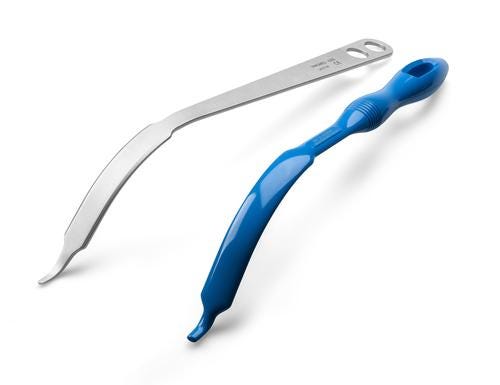The Fallout from the UCLA Sterilization Failure Will be Better Medical Device Design
June 12, 2015

As we discussed in a recent article on plastics for medical devices, the design of more single-use devices is being driven by concerns about the rising number of infections acquired in US hospitals from reusable instruments. The poster child case was the highly publicized UCLA endoscope sterilization failure, which Design News reported, and which seems to have been a tipping point.
There have been several consequences of that failure that affect materials buyers and suppliers, as well as device makers. Most of this is good news and will result in better device design. Some consequences are focused on the push toward more single-use designs, such as the ongoing replacement of metals by plastics, or of older plastics by newer ones. Others are aimed more at improving the design of reusable devices, such as hybrid devices that incorporate both metals and polymers.
A major result of the UCLA sterilization failure case, as well as others like it, has been a push from the FDA toward device OEMs to go back to the drawing board and design reusable devices not only for sterilizability, but for sterilizability that can be validated. Since this means changes in some device designs and completely rethinking others, the design freedom plastics offer compared to metal is making some OEMs lean toward hybrid devices, Dane Waund, Solvay Specialty Polymers' global market manager for healthcare, told us.

This rethinking process means developing designs for today's complex multi-part instruments that can be easily taken apart, sterilized, and reassembled for inspection. The FDA's new guidance document for the reprocessing of reusable devices requires the validation of cleaning, disinfection, and sterilization of devices in all cases before pre-submission, said Waund. "This differs from previous 1996 guidance that allowed more flexibility with acceptable predicate devices and procedures." In Europe, changes were adopted in the European medical device directive as far back as 2012, for implementation during 2014 through 2019.
MORE FROM DESIGN NEWS: How Poor Design Exposed Patients to a Deadly Superbug
The key effects on the efforts to replace metal with plastic in medical devices are several. On the one hand, this new FDA guidance is considered a "big pain" for device manufacturers, Waund said, since the effort of validating every new device will consume developmental resources. It will also require more data and support from potential plastic material and component suppliers. On the other hand, "it levels the playing field between plastics and metals, since new plastic components are not disadvantaged if no previous use history exists," said Waund. "The OEM must validate anyway." The new guidance, which is specifically related to reusable devices, may also lead to faster adoption of single-use instrumentation where plastics play a large role.
MORE FROM DESIGN NEWS: Compliance Management Helps Medical Device Makers Cope With Regulatory Burdens
Increased scrutiny and validation for sterilization of reusable instruments is having other effects on both device OEMs and materials suppliers, said Waund. For instance, OEMs must now do several things differently. These include improving operational efficiency to maintain needed margins and designing and planning for longer product life cycles. They must also create strategies to maintain and differentiate their "premium" offering -- as they have historically -- and still differentiate their "value" offering from low-cost competitors who seek to replace them with "generics" or "value brands."
The pressure on care providers to reduce the cost of instrumentation is resulting in a push toward higher volumes, which favor plastic mass production techniques, instead of a more traditional "job shop" manufacturing orientation using metals in smaller lots, which is better for quality control, said Waund. Consequently, more hybrid devices are being developed that combine metal and plastics for a more optimal design.
One of the biggest changes when replacing metals with plastics in devices is new traceability rules. "There's now a requirement for much more transparency throughout the supply chain," said Waund. "That means increased auditing, including unannounced on-site audits. The practical effect is that OEMs are forced to rework supply contracts and create systems to share and document more information within existing supply chains. It also means more regulatory support is required from plastic material and/or component suppliers that are interested in converting metal designs and becoming new suppliers."
Ann R. Thryft is senior technical editor, materials & assembly, for Design News. She's been writing about manufacturing- and electronics-related technologies for 27 years, covering manufacturing materials & processes, alternative energy, and robotics. In the past, she's also written about machine vision and all kinds of communications.
Design & Manufacturing Canada, the largest advanced design and manufacturing trade show serving Canada, will take place in Toronto, June 16-18, 2015. Learn more here.
About the Author(s)
You May Also Like



